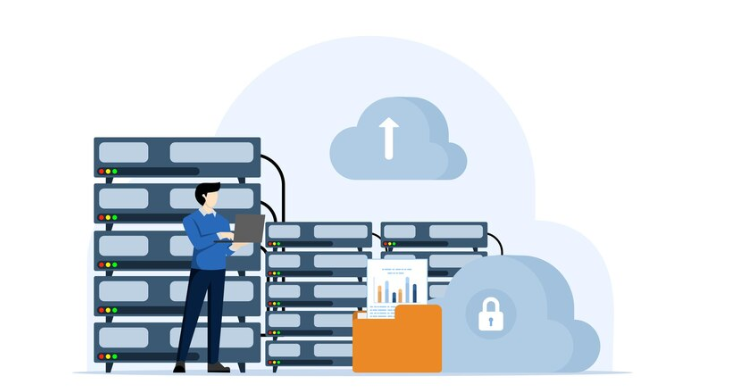
In the evolving world of data management, scale-out storage has emerged as a linchpin in the architecture, handling, and scalability of information. From small businesses to enterprise-level organizations, understanding the intricacies of this storage structure is crucial for a seamless data operation. But with a dynamic landscape driven by technological innovations, navigating the scale-out storage arena can be as daunting as it is essential. This deep-dive blog post is crafted to be a beacon for Storage Administrators, IT Directors, and professionals in every tier of the data management chain. By dissecting the current trends, demystifying the core technologies, and providing practical implementation tips, we can chart a course not just to harness the current benefits but also to future-proof our storage strategies.
Introduction to Scale-Out Storage
At its core, scale-out storage expands capacity by adding more storage nodes, typically using a distributed file system that allows the system to grow without disruption. The significance of scale-out storage is that it caters to the incessant growth in data volumes, common in the digital age. Unlike traditional scale-up storage, which requires replacing hardware to scale, the 'increased with demand' flexibility of scale-out storage is its key attraction.
Understanding scale-out storage is now a necessity, not just a luxury, for companies looking to outpace their data growth and extract more value from their architecture’s inherent flexibility.
Trends in Scale-Out Storage
- Cloud Integration
The rapid adoption of hybrid and multi-cloud environments has profoundly affected the trajectory of scale-out storage. Companies are seeking the benefits of cloud elasticity, which is leading to a convergence of cloud storage models with on-premise scale-out architecture. Leveraging cloud-based resources as a part of the overall storage strategy is a trend that is here to stay.
- Data Tiering Strategies
Efficient data tiering has become a focal point in storage strategies. By orchestrating the movement of data between high performance on-premises storage and lower cost, lower speed alternatives, companies can ensure that frequently accessed data is at hand while older, less-frequently accessed data is stored in a more cost-effective manner, without sacrificing accessibility.
- AI and ML Applications
Artificial intelligence and machine learning workloads are data-hungry, which has resulted in a surge in demand for scalable and performant storage solutions. The complexity and large dataset requirements of these applications have highlighted the importance of high-throughput, low-latency storage environments that can dynamically scale to meet the processing demands.
Key Technologies in Scale-Out Storage
- Distributed File Systems
The backbone of scale-out storage, distributed file systems like Ceph and GlusterFS, manage data across a cluster of servers. Client nodes connect to multiple servers to access their data, allowing for data redundancy and groupings that support large-scale operations.
- Object Storage Solutions
Object storage, like Amazon S3 and Azure Blob, is used for unstructured data, using a flat address scheme that scales easily and provides the durability and access efficiency required for large data sets, making it a key technology for scale-out data storage.
- Data Replication and Redundancy Mechanisms
Ensuring data integrity is paramount in storage systems. Technologies such as erasure coding and synchronous and asynchronous replication provide multiple layers of data protection, reducing the risk of data loss and increasing the system's resilience.
Tips for Effective Scale-Out Storage Implementation
- Capacity Planning
Balancing storage capacity with expanding data needs can be a complex task. Forecasting and planning growth are critical, and here, tools that analyze data usage patterns and predict future demands can be invaluable.
- Data Protection Strategies
Implementing robust data protection strategies helps safeguard against data corruption, failure, or loss. Strategies such as regular backups, snapshotting, and versioning, when combined with RAID or mirroring, ensure data availability and compliance.
- Scalability Considerations
The ability to add or remove storage capacity non-disruptively is one of the primary benefits of scale-out storage, yet adequate planning to ensure consistent performance even as the system scales is essential. This may involve a careful balance of scaling CPU, memory, and storage resources.
Case Studies or Industry Examples
In showcasing successful implementations, we can glean insights on how different industries tailored solutions to their unique needs. By examining their paths to success, we learn not just from their triumphs, but also from the challenges they overcame.
- Successful Scale-Out Storage Deployments
An examination of companies that have embraced scale-out storage and reaped the benefits—improved performance, cost reduction, and future scalability—can guide organizations on their path to implementation.
- Challenges Faced and Solutions Implemented
Uncovering the obstacles encountered during storage deployments and how these were addressed offers a practical framework for troubleshooting and pre-empting potential issues in your own storage roadmap.
Conclusion
Navigating the scale-out storage landscape is more than just responding to data volume growth; it's about capitalizing on the flexibility, performance, and efficiency that modern storage technologies offer. By staying abreast of trends and leveraging the right technologies, businesses can build robust data architectures that not only meet current demands but also have the agility to adapt to future innovations. The key to a successful scale-out NAS storage strategy lies in a proactive approach—assimilating knowledge, learning from the experiences of others, and committing to a continual process of optimization.
Looking to the future, we see a storage landscape that continues to converge with other technologies, enabling more intelligent and automated storage management. By focusing on the pillars outlined in this post—trends, technologies, and implementation strategies—you will not only fortify your current data infrastructure but also position yourself at the forefront of the storage revolution.
Navigating the Scale-Out Storage Landscape: Trends, Technologies, and Tips